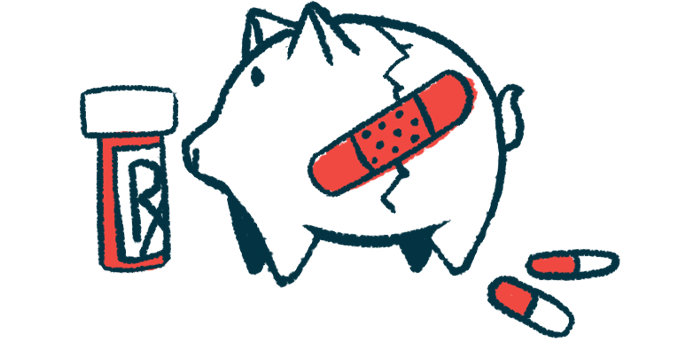HAE Preventive Therapy Not Cost-effective, Prices Need to Drop 50%
Written by |

The prices of three approved preventive treatments — Cinryze, Haegarda, and Takhzyro (lanadelumab) — for hereditary angioedema (HAE) must be reduced by more than half for these medications to be cost-effective.
Those are the conclusions of a new report published by the Institute for Clinical and Economic Review, known as ICER, an independent non-profit research organization that serves as a healthcare watchdog. The report was conducted in collaboration with Aetion and the University of Washington.
“All the HAE prophylaxis [preventive] agents would need to be priced significantly lower than the current list prices to reach health-benefit price benchmarks,” the report said, suggesting price cuts ranging from 53-75%.
HAE is characterized by bouts of swelling and painful attacks. Cinryze, Haegarda, and Takhzyro are all FDA-approved therapies that are meant to prevent such HAE attacks.
ICER had conducted an analysis in 2018 to assess the cost-effectiveness of these medications — essentially, to determine how much benefit these therapies provide taking into account how much they cost.
A noted limitation of the prior analysis, however, was that it relied on data from clinical trials to determine how frequently HAE patients would have swelling attacks in the absence of treatment. Based on that data, the rate of attacks was estimated to be at 3.39 per month.
The updated report includes real-world evidence (RWE) of 158 HAE patients treated with one of the three therapies. In the six months before starting on the respective treatment, these patients experienced an average of 1.88 swelling attacks per month — much less than the 3.39 rate seen in the previous analysis.
“As ICER noted throughout our earlier assessment of these HAE therapies, our original economic models were highly sensitive to small changes in assumptions about the frequency of baseline attacks, the amount of on-demand treatment required, and the exact dosing regimens of prophylactic therapy,” Jon Campbell, PhD, senior vice president of health economics at ICER, said in a press release.
“This atypically sensitive cost-effectiveness model, coupled with the high frequency and cost of HAE attacks, made this disease an ideal candidate for further RWE exploration,” Campbell said.
Now, cost-effectiveness was calculated taking into account the lower rate of attacks. The cut-off for being “cost-effective” was when one quality-adjusted life year (QALY) was valued from $100,000 to $150,000.
A QALY is basically representative of one year of good health. In keeping with prior data, the new analysis showed that all three therapies are generally effective at preventing swelling attacks and improving quality of life.
However, none were even remotely cost-effective, the analysis found. In fact, with the new parameters, ICER said all three therapies now “are far less cost-effective than earlier estimates.”
To be cost-effective, the yearly price tag for Haegarda would need to be reduced by about 54% from its current cost of about $536,694 per year, according to ICER. The price would need to be less than $250,000 to achieve cost-effectiveness, the organization said.
For Takhzyro, which currently costs about $461,611 per year, the price would need to come down by roughly 53%, to under $220,000 per year.
Cinryze currently costs about $548,563 per year. The results showed that its cost would have to be about 75% lower — around $140,000 — to be cost-effective.
Notably, for all three medications, the calculated cost-effectiveness value was lower than in the 2018 estimate, owing in large part to the assumption of a lower rate of swelling attacks, which are costly to treat.
“De-identified claims data suggest that patients initiating prophylaxis therapy in the real world had fewer baseline attacks than that of individuals who participated in the clinical trials. As a result, all three assessed therapies require even larger price discounts to reach common thresholds for cost-effectiveness than what our models had originally projected in 2018,” Campbell said.
The University of Washington developed the cost effectiveness model, while Aetion was charged with determining the RWE.
“This initiative demonstrates the value of transparent and reproducible RWE to inform important decisions that impact patient care,” added Carolyn Magill, CEO of Aetion.
The report also notes that cost-effectiveness is just one measure that “should be considered alongside other potential benefits and contextual considerations … for the purposes of judging a treatment’s overall value.”







